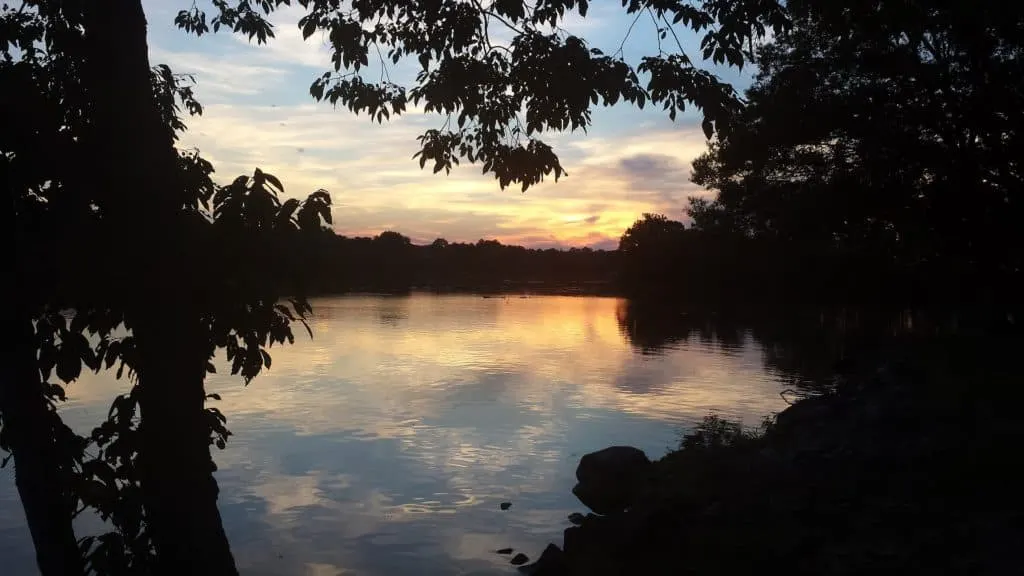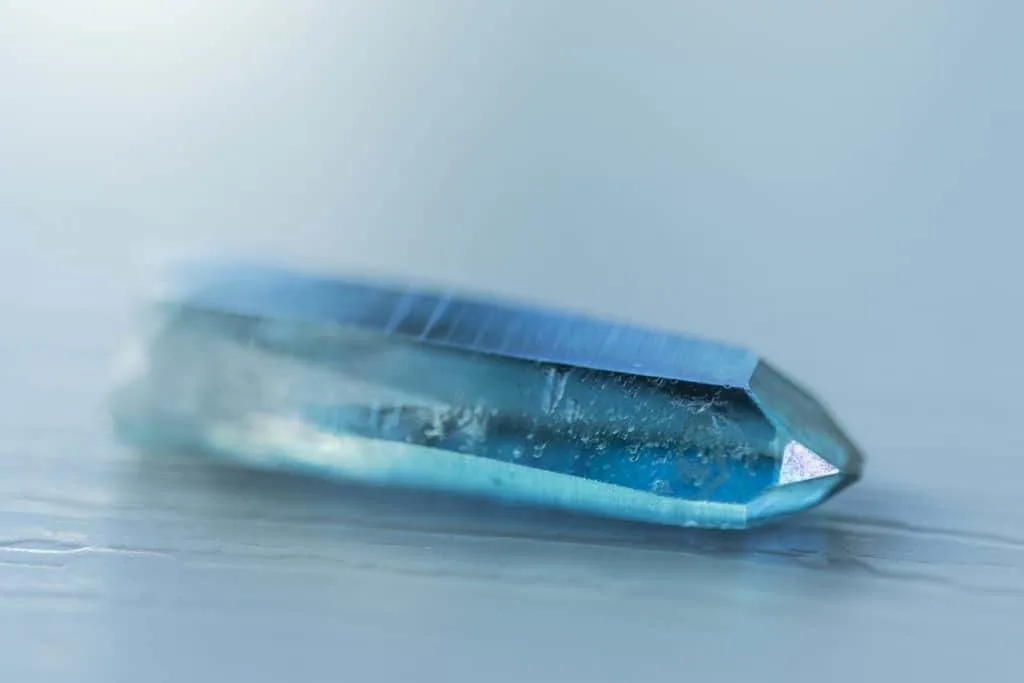As an Amazon Associate, I earn from qualifying purchases with no additional costs for you.
Alabama is one of the best places for rockhounding due to its rich deposits of minerals, rocks, and gemstones. This state also has a stunning diversity of fossils, including giant prehistoric whales. Although the country has a wide variety of minerals, some countries are especially rich in exciting specimens. So where is Rockhound in Alabama, and what can you find?
Counties such as Coosa, Madison, Clay, Cleburne, or Jackson contain deposits of different gemstones such as star blue quartz (the state’s official gemstone), garnets, tourmaline, beryl, agates, emerald, or jasper. An excellent place for rockhounds and those who still suffer from gold fever is the Alabama Gold Camp.
Alabama offers a wealth of opportunities for rockhounding enthusiasts. From panning for gold to uncovering captivating minerals like citrine and red garnets, the state is a veritable treasure trove. You’ll also encounter an array of other minerals, including hematite, marble, coal, limestone, and gneiss. Moreover, southwestern Alabama is a hotspot for fossil hunting, offering the chance to discover ancient relics such as dinosaur remains. With such diverse offerings, Alabama beckons rockhounds to embark on thrilling adventures across its landscapes. So, let’s pack our gear and set out to explore the rich geological wonders of Alabama!

Best Places for Rockhounding in the State of Alabama
Where are the best spots for rockhounding in Alabama? This is a great question with a tricky answer because Alabama is rich in geology. Let’s explore the top places for rockhounding in the state!
Coosa County:
Located in east-central Alabama, Coosa County is probably the best place for finding gemstones. You can discover actinolite-tremolite, beryl, tourmaline, muscovite, aquamarine, and emeralds here.
The area is also known for cassiterite deposits, hornblende, gneiss, kaolinite, and feldspar. If you’re into gold prospecting, check out Hatchett Creek, Weogfuka Creek, and Rockford.
Talladega County:
Known for its marble deposits, Talladega County is home to Sylacauga, also called the Marble City. You can find marble, calcite, and pyrite here, along with hematite, kaolinite, copper, quartz, magnetite, and more. There are over 180 mines listed in the county, mostly for small amounts of iron.
BTW: Do you want to know more about rock and mineral identification? The books listed below are the best ones you can find on the internet (Amazon links):
- Smithsonian Handbooks: Rocks & Minerals
- Gemstone & Crystal Properties (Quick Study Home)
- Ultimate Explorer Field Guide: Rocks and Minerals (National Geographic Kids)
What Gemstones Are Found in Alabama?
Alabama has a variety of gemstones waiting to be discovered. The state’s official gemstone is star blue quartz, found along the Flint River in Madison County. Other gems include amethyst, beryl, onyx, agate, staurolite, tourmaline, turquoise, opal, andalusite, jasper, and garnet.
These are some of the top places for rockhounding in Alabama. Check out the table below to see what gemstones are found in Alabama and where!
| Gemstones | Locations |
|---|---|
| Star blue quartz | Cleburne, Chambers, and Coosa counties |
| Beryl specimens (emerald and aquamarine) | Within the Piedmont geological area (Coosa County) |
| Tourmaline | Cleburne, Chambers, Coosa counties |
| Jasper | Blount County |
Now, look at what sedimentary rocks you can find in Alabama and where.
TIP: Emerald is one of the most popular gemstones known to people. Fewer people know that mineralogically emerald is a variety of beryl group minerals. Find out more in the article below:
Beryl vs. Emerald: 7 Key Differences (Are They The Same?)
What Sedimentary Rocks You Can Find in Alabama?
The sediments left behind by the ancient oceans and swamps have great economic importance for Alabama.
Alabama has essential deposits of limestone, chalk, sandstone, and shale. These sedimentary rocks are economically important for developing fertile soils and making up the 20 major aquifers.
The table below shows you what sedimentary rocks you can find in Alabama and where to look.
| Sedimentary Rocks | Locations |
|---|---|
| Chalk | Coastal Plain area, along the Tombigbee River |
| Sandstone | Northern Alabama, Jefferson County (Hartselle Sandstone), Southwestern Alabama (Tallahatta Sandstone) |
| Shale | Green County, Tuscaloosa County, Jefferson County, Jackson County |
Apart from sedimentary rocks, Alabama has a wide variety of metamorphic rocks. Let’s see where you can find them.
What Metamorphic Rocks are found in Alabama?
Most metamorphic rocks in Alabama range in age from Precambrian to Devonian.
Most of the metamorphic rocks in Alabama are found within the Piedmont Upland area and consist of schist, gneiss, quartzite, or marble. Let’s check out the below table to see what metamorphic rocks are found in Alabama and where.
| Metamorphic Rocks | Locations |
|---|---|
| Marble | Middle eastern and southeastern parts of the state: Talladega County, Coosa County, Jefferson County |
| Schist | Clay County, Tallapoosa County |
| Quartzite | Lee County, Clay County |
Now that we have discussed sedimentary and metamorphic rocks in Alabama let’s see if igneous rocks are also here!
What Igneous Rocks Can You Find in Alabama?
The igneous rocks represent the oldest rocks in Alabama, dating back to the Precambrian.
These volcanic rocks are found mainly in the Piedmont Upland, on the east-central side of Alabama. Among the igneous rocks found in this state, we must mention granite, pegmatite, or diorite.
Various metallic and non-metallic minerals have been successfully mined from these igneous rocks. Check out the below table to see what igneous rocks are found and where to look for them!
| Igneous Rocks | Locations |
|---|---|
| Granite | Coosa County |
| Pegmatite | Cleburne County, Coosa County |
| Diorite | Coosa County, Tallapoosa County |
We have seen what rocks and gemstones can be found in Alabama, but maybe you are more interested in finding gold. Let’s see where you can find gold in this state!
TIP: Do you know how to identify igneous rocks? It can be tricky sometimes, so I will summarize the six main characteristics of igneous rocks for better identification. Find out more in the article below:
Simple Explanation: 6 Main Characteristics of Igneous Rocks
Where to Find Gold in Alabama?
Alabama was no stranger to the Gold Rush. Significant amounts were mined from Alabama, making this state one of the major gold producers from the Mississippi River’s east.
In Alabama, gold was found in lode and placer deposits in counties such as Talladega, Tallapoosa, Chambers, Clay, Coosa, Chilton, Elmore, Cleburne, and Randolph.
One of Alabama’s biggest gold producers is the Hog Mountain District in Tallapoosa County, while the nearby creeks have placer gold. Other vital mines are the Riddle Mine and Story Mine in Talladega County. Placer gold can be found in Talladega Creek and Talladega National Forest.
Gold is also abundant in Coosa County. Gold Ridge Mine produced gold as a byproduct of copper mining. The placer gold can be found along Hatchett Creek, Weogufka Creek, or the Rockford Placers in this county.
I know you would love to find some gold nuggets,, but let’s see if panning for gold in Alabama is legal.
Is it Legal to Pan for Gold in Alabama?
Gold panning in Alabama is not illegal; however, you may need a permit, depending on the district.
Many former gold mines are now open to the public, and the nearby creeks contain placer gold. One thing to consider, though, is that many of these creeks pass by private properties, so asking for permission is a must.
Of course, you can always visit the Alabama Gold Camp, where you can pan, sluice, or try to detect metals for a decent fee. Remember not to be deceived by the fool’s gold, pyrite that can be found in Clay County.
If gold is not your thing, you may rockhound for the star blue quartz, Alabama’s official gemstone.
TIP: Alabama’s gold rush kicked off in the early 1830s when gold was first discovered in Chilton County. Find out more about the gold prospecting in Alabama below:
Gold Prospecting in Alabama: 7 Best Locations & Laws
Where to Find Star Blue Quartz in Alabama?

The Star Blue Quartz is Alabama’s official gemstone since 1990. Although quartz is a common mineral, the blue variety is quite rare.
The star blue quartz in Alabama can be found along the Flint River in Madison County. If you don’t want to chase the beautiful star blue quartz, you can check if what they say about the Alabama marble is true.
Where to Find Marble in Alabama?
Alabama marble is famous worldwide due to its white color and crystalline structure.
Marble, the state’s mineral since 1969, is found in Talladega County. The wealthiest deposits were found in Sylacauga, known as the Marble City.
Considerable marble deposits can also be found in Bibb, Calhoun, Cherokee, Chilton, Coosa, Jefferson, and Shelby Counties. However, the Sylacauga marble is the best.
You can convince yourself by attending this town’s Magic of Marble Festival in the second week of April. Alabama is also rich in mineral deposits. Let’s see what an amateur geologist can find!
What Minerals Can You Find in Alabama?
Alabama hosts over 190 mineral species all over the state. These minerals played an essential role in the state’s development.
Some of the most important mineral deposits are in the Piedmont Upland region of Alabama. Most minerals are found in Chambers, Coosa, Randolph, Tallapoosa, Clay, Cleburne, and parts of the Elmore, Lee, and Chilton Counties.
The official mineral of Alabama is hematite. Check out the below table to see what minerals can be found in Alabama and where.
| Minerals | Locations |
|---|---|
| Hematite | The central and northeastern sides of the state, along the Red Mountain, Birmingham District |
| Kaolinite | Coosa County |
| Muscovite | Randolph, Coosa, Tallapoosa, Cleburne, Clay Counties |
| Pyrite | Clay, Limestone, Talladega Counties |
Where Can I Find Fossils in Alabama?
Alabama is a great place to visit if you are interested in finding fossils. Numerous sites throughout the state reveal fossils from the ancient Cambrian period to almost modern-day sediments.
The state’s official fossil is Basilosaurus cetoides, a toothed whale whose discovery in Alabama helped scientists learn about this paleontological species.
This state is a great place to go fossil collecting. You can also check the extensive collections from museums, such as the Anniston Museum of Natural History, McWane Center in Birmingham, the Auburn University Museum of Natural History, and the Alabama Museum of Natural History in Tuscaloosa.
TIP: It’s rockhounding time now! Just to be sure you have all the needed tools for rockhounding, check out my recommendations in the articles below:
Recommended Tools and Equipment for Rockhounding
